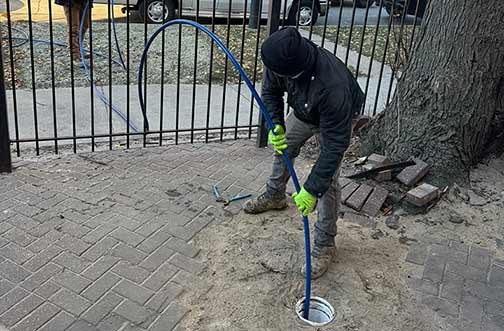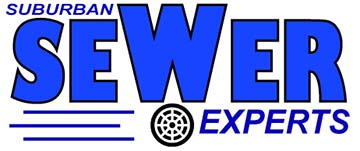
When the drainage pipes in your home are first installed, they never clog or seem to need your help to keep them flowing. However, Keyrenter North Dallas team says, as the years pass, you may notice problems like slow drains and bad odors from your drains.
If these problems are not solved, you will have worse problems like blocked drains, overflowing toilets, or sewage backing up into the house. What changed? Why do the drainpipes in your home suffer from clogs and blockages?
How your home’s drainage system works
There are two main reasons why drains become clogged. There are natural reasons which are mostly unavoidable, and there are man made causes that can be avoided. To understand both, we need to understand how residential drains work.
A home’s drainage system can be roughly divided into two parts: drain lines and the sewer line. Every drain line is connected to a specific plumbing fixture in the home. It collects wastewater from that fixture and carries it to a larger pipe (the main drain) or directly into the sewer line.
The sewer line, on the other hand, is the largest pipe in your drainage system (4 inches to 8 inches in diameter), and it transports all the wastewater from your house into the municipal sewer lines found in the streets. Your sewer line runs underground through your yard.
Why your drains get clogged
- Natural causes of clogged drains
There are two categories of wastewater that enter the drain lines in your home: greywater and blackwater. Greywater is used-up water from sinks and showers. It does not contain human waste. Blackwater is wastewater with human waste.
Both greywater and blackwater contain amounts of semi-solid and solid materials. As they flow through your drainage pipes into the sewer line before entering the city sewer system, some non-liquid materials are deposited inside the pipes.
This cannot be avoided as long as there are semi-solid and solid materials inside the wastewater. With time, however, these deposits can build up inside the pipes until they interfere with the flow of wastewater, ultimately leading to slow or blocked drains.
- Man made causes of clogged drains
Drain clogs also happen because people put the wrong things into their drainage system. Most of us wrongly assume that the drainage systems in our homes can handle whatever we throw at them.
Consequently, the following types of materials often find their way into the kitchen sink: starchy foods, fibrous veggies, coffee grounds, eggshells, fats, oil and grease, as well as fruit pies. These materials stick to the sides of drain lines and clog the pipes.
People also flush things into the toilet drain. Ideally, nothing should enter the toilet except human waste and toilet paper. Even if labeled as flushable items, like feminine hygiene products, paper towels/wipes, chewing gum, tissue, condoms, etc., will clog your drain.
If your drains are clogged, how do you clean them?
Hydro jetting: the most effective drain-cleaning strategy
Hydro jetting lets you reach into your drainpipes to directly remove the debris inside them. This drain-cleaning method uses the power of pressurized water delivered right inside your pipes and sewer line. How does hydro jetting work?
To clear a clogged drain, a flexible high-pressure water hose is passed into the line via the cleanout or other access point. At one end of the hose is a stainless steel nozzle, with the other end connected to a pressurizing machine and water tank.
Once in place inside the line, a jet stream of high-pressure water is fired into the pipe to dislodge the debris. Under the force of the ejecting water, the nozzle is driven forward into the pipe. The water pressure used in the operation is powerful enough to clear sludge, scale, or even tree roots.
Hydro jetting as a drain-cleaning strategy has obvious advantages over other methods.
Benefits of hydro jetting
- Hydro jetting cleans
It is the only drain-cleaning method that truly “cleans” your drains. Other methods like sewer rodding leave the dislodged debris inside your pipes. But hydro jetting flushes the debris out. At the same time, it washes the inside of the pipes.
- Hydro jetting is completely non-invasive
You do not have to dig up your lawn to access your drainpipes or sewer lines to clean them. This makes hydro jetting minimally disruptive and very cost-efficient.
- Hydro jetting saves time and money
Hydro jetting your drains will not prevent access to your plumbing fixtures. The operation can be completed in hours without meaningful impact on your day-to-day routines.
- Hydro jetting is preventive
This is the best drain-cleaning method for preventing drainage problems in your home. By hydro jetting your drains once every year, you ensure that you never have to deal with clogged drains in your home.
What should you know before hydro jetting your drains? How do you know if your drains need hydro jetting? We can help you answer those questions. If you are struggling with drainage issues in your home or want a method to prevent drain issues, we can help.

